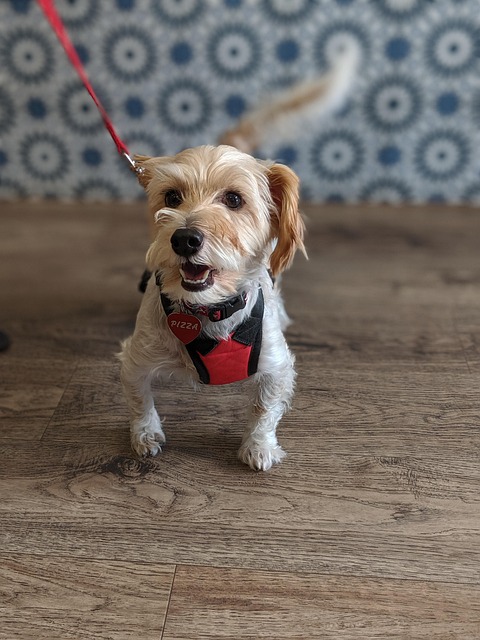Essential Methods for Teaching Commands and Improving Behavior
Teaching your canine companion is an essential process that helps establish harmonious relationships between the animal and owner. The right approach to instruction ensures not only obedience but also promotes socialization, improves behavior, and creates a safe environment for all family members. In this article, we explore fundamental methods, effective techniques, and practical advice for successfully educating your four-legged friend.

Educating canines is a fundamental part of responsible pet ownership. It includes teaching basic commands, correcting unwanted behavior, and developing skills that make living with a dog comfortable and safe. Regardless of breed or age, every dog requires a structured approach to instruction based on positive reinforcement, patience, and consistency.
How to Start Training Your Puppy
Puppy instruction should begin as early as possible, ideally from 8 weeks of age. During this period, the puppy’s brain is most receptive to new information. First steps include name recognition, establishing feeding and sleeping routines, and basic housetraining. It is important to create a safe environment where the puppy can explore the world without excessive stress. Use short sessions lasting 5-10 minutes several times a day, as young dogs have limited attention spans. Encourage correct behavior with treats, praise, and play, forming positive associations with the learning process. Consistency from all family members is crucial during these early stages. Avoid overwhelming the puppy with too many commands at once, focusing instead on one or two basics before progressing further.
Essential Obedience Commands and Their Importance
Basic obedience commands form the foundation of effective communication between owner and dog. Commands such as sit, down, stay, come, and heel are essential for safety and control in various situations. Teaching these commands begins with clear demonstration of the desired behavior and immediate reinforcement. Use single-word commands with consistent intonation to avoid confusion. Practice commands in different locations and with distracting factors present, gradually increasing difficulty. Consistency in enforcing requirements by all family members is critically important for reinforcing skills. Regular sessions, even just 10-15 minutes daily, produce significantly better results than long but irregular ones. These commands not only improve manners but also strengthen the bond between handler and dog, creating mutual understanding and trust.
Correcting Behavioral Problems
Behavioral problems such as excessive barking, jumping on people, chewing objects, or aggression require timely correction. Understanding the cause of unwanted behavior is the first step toward eliminating it. Often such problems arise from insufficient physical activity, boredom, fear, or lack of clear boundaries. Apply the redirection method, offering alternative behavior instead of punishment. For example, if a dog chews furniture, provide appropriate chew toys. Ignore attention-seeking unwanted behavior and actively encourage correct actions. In complex cases, it is recommended to consult a professional trainer or animal behaviorist for an individualized correction program. Never use physical punishment, as this can worsen behavioral issues and damage the relationship with your dog.
Positive Reinforcement Techniques and Clicker Use
Positive reinforcement is the most effective method, based on rewarding correct behavior instead of punishing mistakes. Clicker instruction is a popular technique where a short click sound marks the exact moment of correct action, followed by a reward. This allows the dog to clearly understand which specific behavior is being encouraged. First, it is necessary to form an association between the clicker sound and reward by clicking and immediately giving a treat several times in succession. Then use the clicker to mark desired behavior during command instruction. It is important to click precisely at the moment of action execution, not after. Gradually you can reduce the frequency of rewards, transitioning to random reinforcement, which makes the skill more stable. This method works for dogs of all ages and can be applied to teaching everything from basic commands to complex tricks and agility courses.
Socialization and Interaction with Other Animals
Socialization is critically important for forming a balanced dog psyche. It includes introducing the dog to different people, animals, places, and situations at an early age. The socialization period lasts approximately until 16 weeks of age, although the process continues throughout life. Organize controlled meetings with other friendly dogs, visit different locations, and introduce various sounds and surfaces. Puppy group classes are an excellent opportunity for socialization under the supervision of experienced handlers. Positive experiences during this period help prevent the development of fears and aggression in the future. Always monitor interactions and stop them at the first signs of discomfort from any animal. Proper socialization creates a confident, well-adjusted dog that can handle new situations calmly and appropriately.
Teaching Leash Walking and Recall Commands
Proper leash walking without pulling is an important skill for comfortable walks. Begin instruction in a calm environment without distracting factors. Use the stop method: when the dog pulls on the leash, stop and do not move until it loosens the tension. As soon as the leash slackens, praise the dog and continue moving. Encourage walking beside you with treats and praise. The recall command is one of the most important for dog safety. Teach it in a safe enclosed space using a long leash for control. Call the dog with a cheerful voice, and when it runs to you, reward generously. Never punish a dog when it comes on command, even if it was disobedient before, otherwise the command will lose its positive association. Practice recall regularly in different environments, gradually increasing distractions to ensure reliability in real-world situations.
Agility and Environmental Enrichment for Mental Development
Agility is a sporting discipline where dogs overcome obstacles under the guidance of handlers. It is an excellent way to provide physical and mental exercise while strengthening the bond between dog and owner. Even if you do not plan to participate in competitions, agility elements can be used for instruction. Environmental enrichment includes providing the dog with opportunities for natural behavior: scent games, interactive toys, and puzzle feeders with treats. Regular rotation of toys and activities prevents boredom and destructive behavior. Mental exercise often tires a dog more than physical activity, so intellectual games are an important part of the daily routine. Create diverse challenges that match your dog’s natural instincts, whether search games for hunting breeds or herding tasks for appropriate groups. This keeps the dog engaged, satisfied, and less likely to develop problem behaviors.
Consistency and the Role of Handlers in Education
Consistency is a key factor in successful canine education. All family members must use the same commands, rules, and encouragement methods to avoid confusing the dog. Establish clear boundaries of what is allowed and forbidden from day one. If the dog is not allowed on the sofa, this rule must be followed always, without exceptions. The role of the handler is not about dominance but about providing clear guidance and structure. An effective handler is calm, confident, and predictable. They establish rules, provide resources and protection, creating a sense of security for the dog. Avoid inconsistency in reactions to dog behavior, as this causes stress and confusion. Regular sessions, patience, and a positive approach form trusting relationships and ensure long-term success. Remember that instruction is not just about teaching commands but about building a lifelong partnership based on mutual respect and understanding.
Conclusion
Canine education is a continuous process that requires time, patience, and consistency. Using positive reinforcement methods, early puppy instruction in basic commands, proper socialization, and behavioral problem correction create the foundation for harmonious relationships with your four-legged friend. Remember that each dog is unique and requires an individual approach. Investment in quality instruction pays off with years of joy from living with a well-mannered, happy, and balanced companion.



